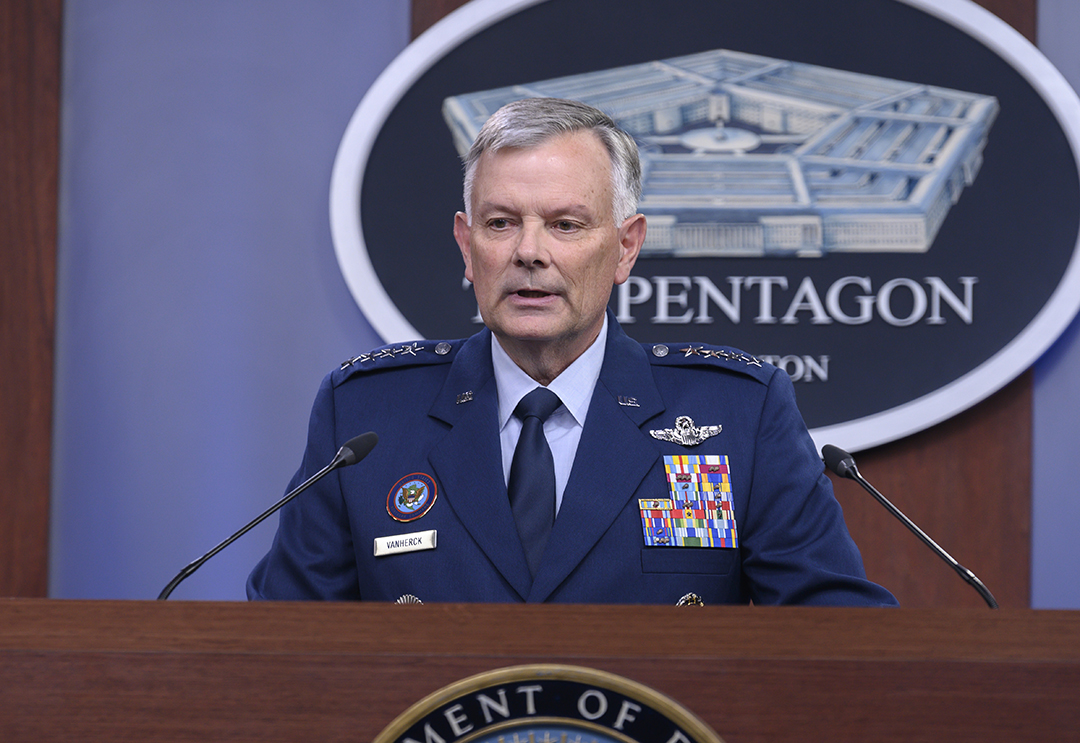THE WATCH STAFF
In 2015, a 61-year-old Florida mail carrier lifted off in a gyrocopter from Pennsylvania bound for Washington, D.C. He flew through protected airspace before landing the aircraft on the U.S. Capitol lawn.
U.S. Air Force Gen. Glen D. VanHerck, in a September 14 online conversation called “Homeland Defense is a Global Endeavor,” used the incident to illustrate how artificial intelligence (AI) is now detecting threats that may have once been missed.
“If it flies, we need to identify it. … Either friendly or foe. It could be a military threat, it could be a civilian threat,” said VanHerck, commander of U.S. Northern Command (USNORTHCOM) and the North American Aerospace Defense Command (NORAD). (Pictured: An Airman monitors traffic over Travis Air Force Base in California in 2017.)

VanHerck, pictured, said that sharing information from multiple systems allows for a quick response — whether the threat is from a nuclear peer or a lone person in a gyrocopter. “My job … is to give decision space and options to our senior leaders,” he said.
The key to providing those options and for de-escalating potential global conflicts, VanHerck said, is domain awareness.
“It doesn’t mean I needed a bunch of new satellites or capabilities,” he said. “It’s about taking information today that exists — oftentimes in stovepipes — and actually just making it available and sharing that information.
“But today what we’re finding is [that in] about 98% of the data, the domain awareness isn’t even shared, and it’s not only military data, it’s commercially available data from our civilians, from our other agencies within the government. It can be anonymized data from information that is publicly available.”
To illustrate, VanHerck shared a slide that showed how the sensors available on the day of the 2015 event failed to specifically identify the gyrocopter. VanHerck said the development of a U.S. capability called Pathfinder now allows USNORTHCOM and NORAD to share the data from military, commercial and government sensors, then uses AI and machine learning to analyze it.
When Pathfinder was applied to the 2015 data, it detected the gyrocopter.
“It’s actually just using data and information that is available,” VanHerck said, “processing it, sharing it. … I’m focused on getting it to the right players at the right time, from the tactical level to the strategic level to make the right decision.”
The right players, VanHerck said, range from civilian agencies to his fellow military combatant commands to NORAD partner Canada and U.S. allies around the world. USNORTHCOM’s area of responsibility encompasses the continental U.S. and Alaska, as well as regional defense partners Canada, Mexico and the Bahamas.
“They are crucial in this globally integrated deterrence and defense,” VanHerck said of the regional partners.
VanHerck pointed out that Russia has the long-range capability to strike the homeland and that China soon will have it, too.
“We no longer have that luxury of that geographic distance … to keep us safe,” he said of the nuclear rivals. “They’ve developed capabilities and reduced our decision space, so that’s something we’re focusing on.”
Still, as VanHerck illustrated, that focus must be wider than nuclear threats. The need for USNORTHCOM to have a greater capability for strategic deterrence is essential.
“I have to start thinking less about conflict and balancing that with the planning for day-to-day [strategic] competition,” he said, “that’s where we’re going to create the deterrence that we need to do.”
IMAGE CREDIT: TECH SGT. JAMES HODGMAN/U.S. AIR FORCE

